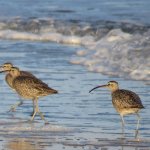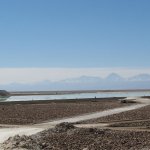By Germán Leyva – Centro de Investigación en Alimentación y Desarrollo – CIAD. Sonora, México
Translated and adapted from an original story written in Spanish.
Shorebirds are amongst the wildlife most affected by the degradation of coastal wetlands; they are experiencing a constant and pronounced population decline. The coastal zones shorebirds rely on for survival have been impacted by human activities such as agriculture, aquaculture, tourism, and urban development. Today, some working lands offer alternative habitat to perturbed natural areas for birds. Industrial salt pans are important refueling sites for shorebirds, and at times the number of birds stopping over on salt pans can be higher than the density of birds recorded at natural wetlands.
Salina de Lobos (>1,000 hectares), an industrial salt pan in southern Sonora, Mexico, is an area of great importance for shorebirds as it is connected to the Bahía de Lobos site of Regional Importance in the Western Hemisphere Shorebird Reserve Network (WHSRN). The site was designated by WHSRN in October 2018. At these salt pans, the evaporation ponds are home to abundant invertebrates such as brine shrimp (Artemia spp.) and brine fly (Ephydra spp.), which serve as prey for shorebirds. At the same time, the great extensions of water facilitate flight and the evasion of predators, whilst the shallow ponds create a favorable environment for resting. Some shorebird species also use the banks, islands, and flats for nesting.
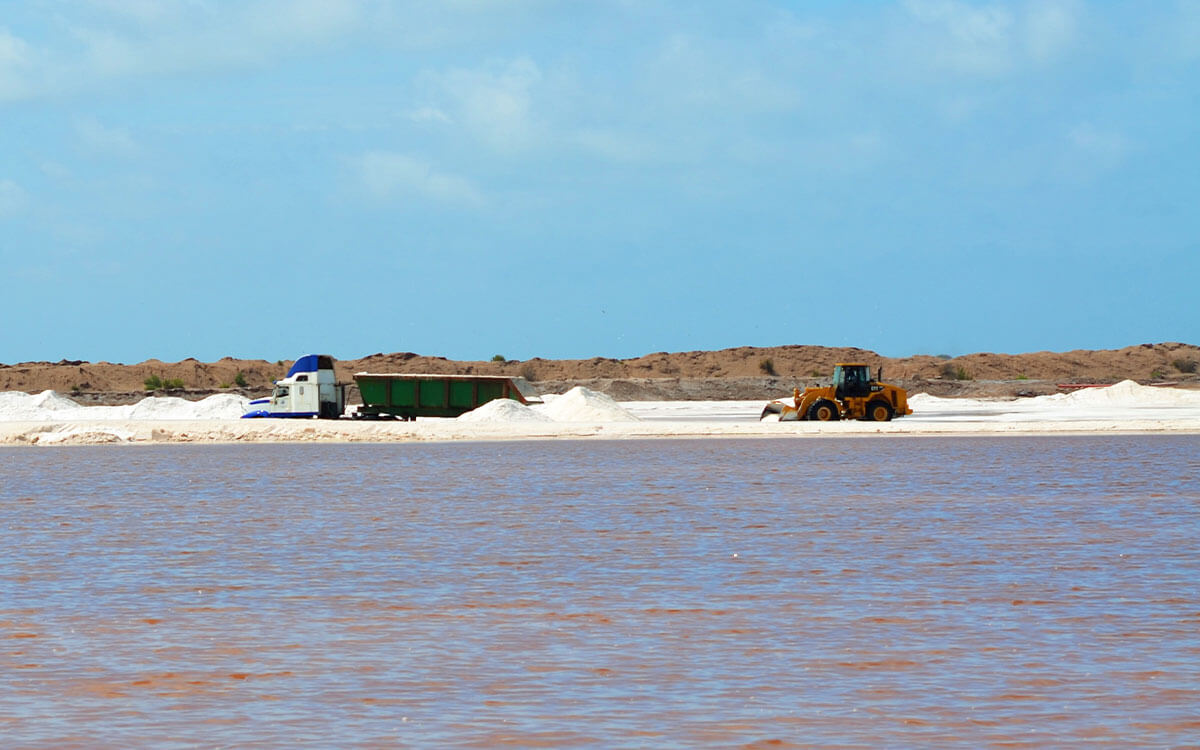
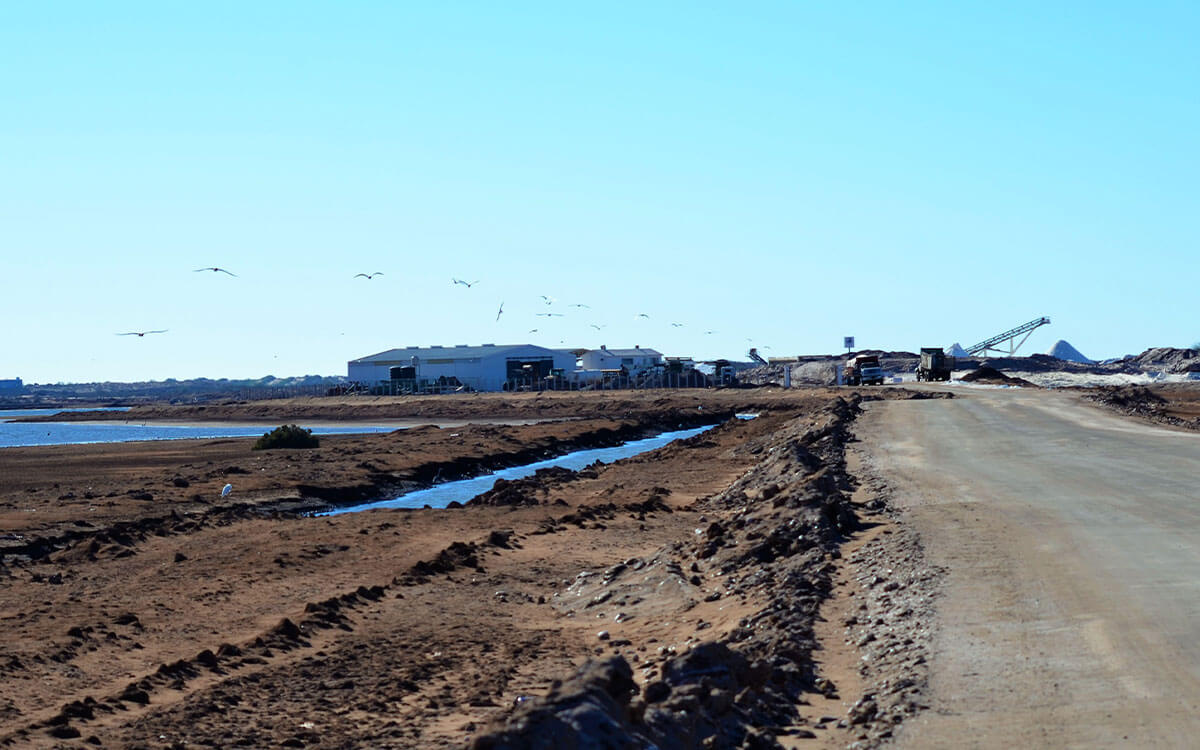
Left: Machinery working harvesting salt. Right: Panoramic view of Salina de Lobos. Photo: Germán Leyva-García.
In 2020, thanks to the support of the Sonoran Joint Venture (SJV), we developed a project “Driving conservation actions for waterbirds in southern Sonora” (“Impulsando acciones de conservación para aves acuáticas en el sur de Sonora”) designed to carry out a base-line analysis of Salina de Lobos and propose joint habitat management actions. The work was coordinated by the Food and Development Research Center (Centro de Investigación en Alimentación y Desarrollo – CIAD) and had diverse partners including the salt company working on the land, Bahía de Lobos community members, the Center for Scientific Investigation and Higher Education of Ensenada (Centro de Investigación Científica y de Educación Superior de Ensenada – CICESE), the Institute of Marine Science and Limnology (Instituto de Ciencias del Mar y Limnología – ICMyL-UNAM), and the Technological Institute of Valle del Yaqui (Instituto Tecnológico del Valle del Yaqui – ITVY).
During the first stage of work, we trained salt company employees and two biology students from the ITVY to monitor shorebirds. We recorded a total of 55 species during migration (October-January), of which 44 percent were shorebirds (23 species). The most common species was the Western Sandpiper (Calidris mauri), which, combined with the Least Sandpiper (C. minutilla), Dunlin (C. alpina), and Sanderling (C. alba), made a total of more than 6,000 individuals. We also recorded 70 individuals of Snowy Plover (Charadrius nivosus), a threatened species in Mexico. Other species of importance were Red-necked Phalarope (Phalaropus lobatus) during autumn and Wilson᾽s Phalarope (Phalaropus tricolor) in spring with up to 250 and 800 individuals, respectively, as well as important groups like ducks (Anatidae) and grebes (Podicipedidae).
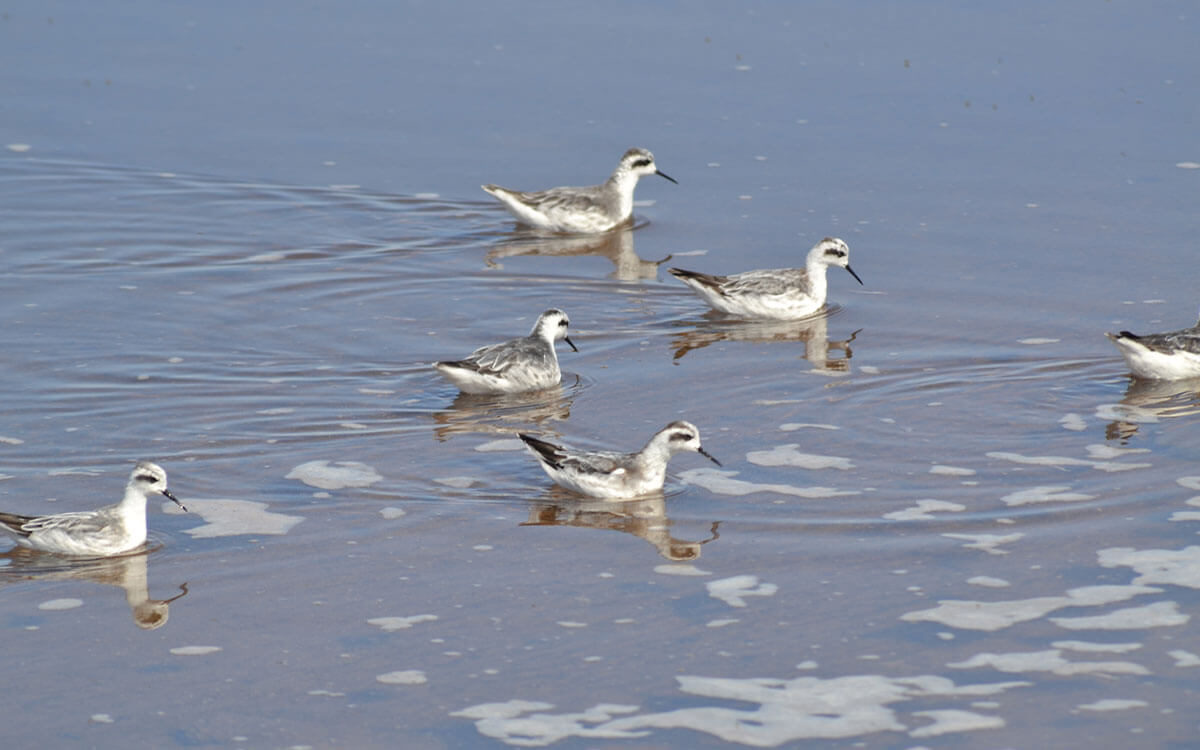
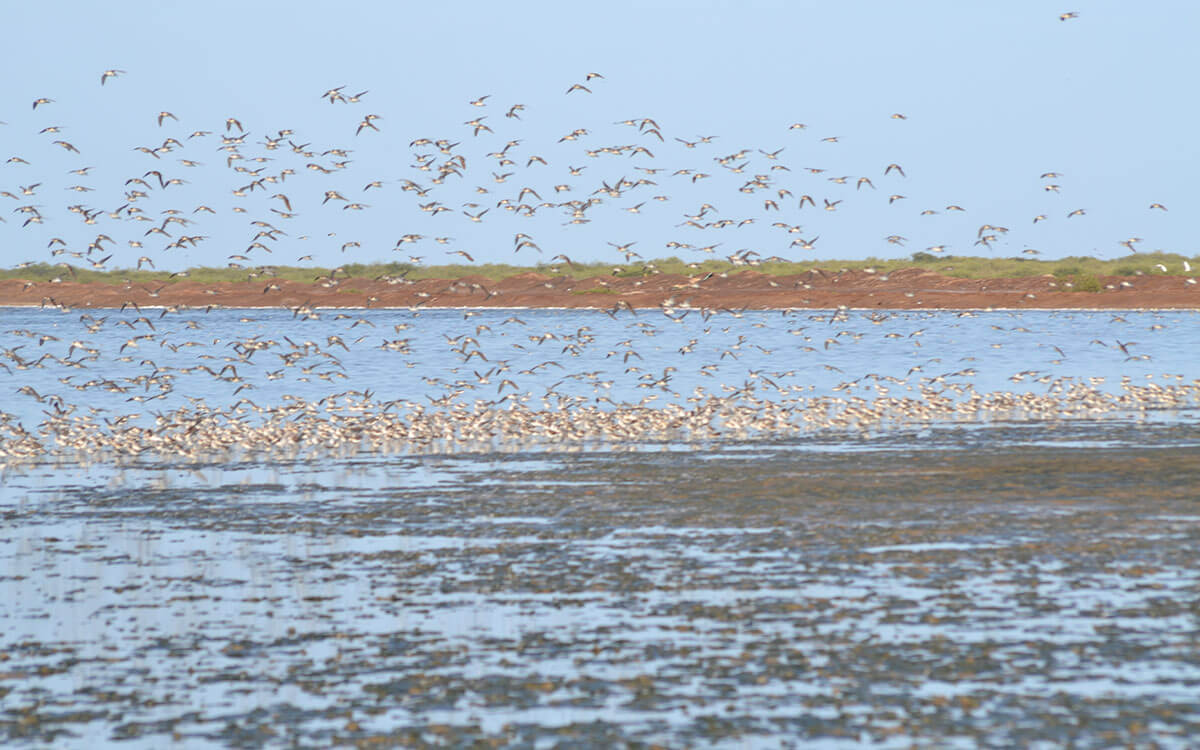
Left: Red-necked Phalaropes. Right: Flock of Wilson᾽s Phalarope. Photos: Germán Leyva-García.
We also carried out monitoring of the species that use the salt pans during their reproductive season, recording five species: 34 pairs of Snowy Plover, 34 pairs of Wilson᾽s Plover (Charadrius wilsonia), 21 pairs of Black-necked Stilt (Himantopus mexicanus), three pairs of American Oystercatcher (Haematopus palluatus), and eight pairs of Least Tern (Sternula antillarum). In two seasons of monitoring, some threats were observed. During migration, for example, we noticed the presence of raptors at shorebirds’ resting and feeding sites–the Peregrine Falcon (Falco peregrinus) was the principal predator. We also observed threats flooding due to high tides and early rains, and the presence of dogs and transit of heavy machinery through some of the birds’ resting and feeding zones.
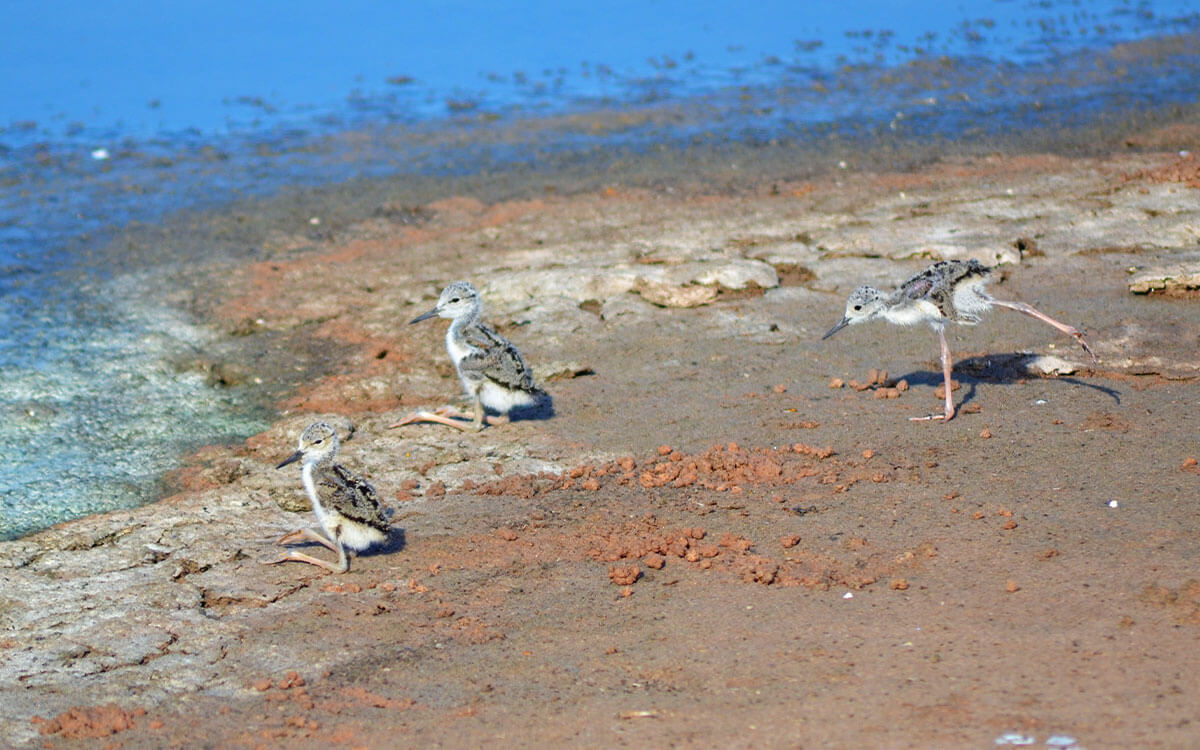
Chicks of Black-necked Stilt. Photo: Germán Leyva-García.
In the second stage of work, we held meetings with partners to determine necessary actions for the conservation of the shorebirds recorded in Salina de Lobos. These meetings allowed us to reach some agreements on habitat management, including activities focused on protecting nesting areas. Some of those agreements were to construct a defensive wall to protect 31.13 acres (12.6 hectares) from flooding, adding earth to boost the height of nesting zones, and installing fences to keep terrestrial predators away from these areas. Additionally, we proposed developing environmental education programs for the local community and workforce, promoting the use of smartphone-based monitoring platforms like eBird and iNaturalist, planning for the first Bahia de Lobos bird festival, as well as continuing our long-term monitoring program with our local partners.
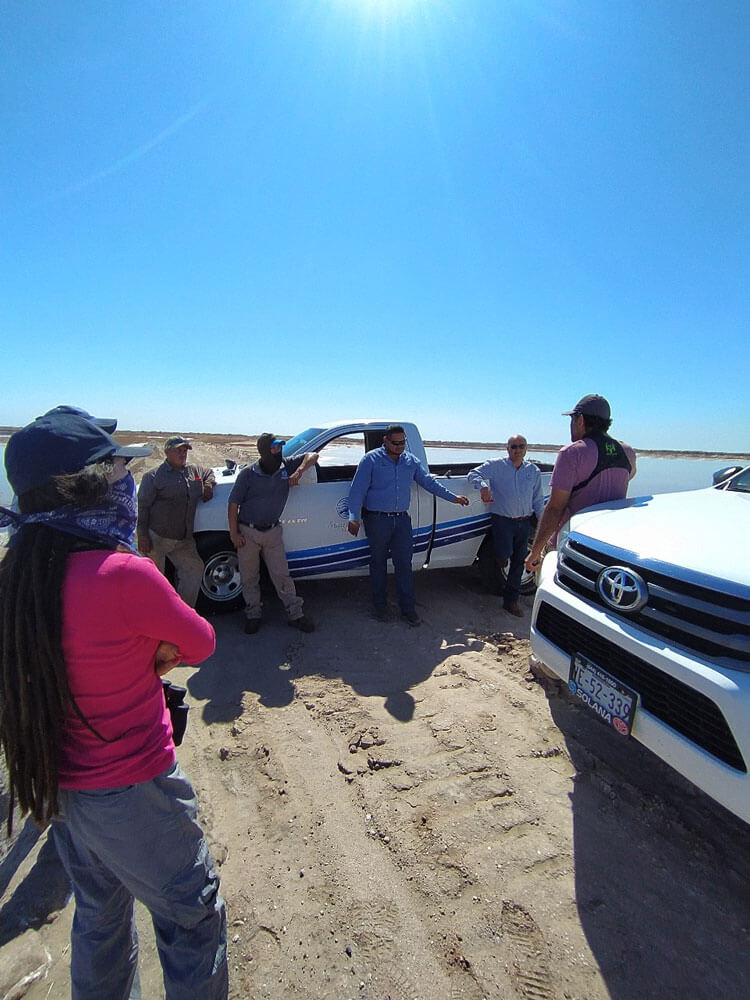
Field work with workers from Salina de Lobos and students from ITVY. Photo: Germán Leyva-García.
The work at Salina de Lobos represents the efforts of diverse actors willing to work together for the conservation of shorebirds and waterbirds in general. We hope that in the medium and long-term, the success of these activities will grow, and the arduous process of conservation both in the Salina and the neighboring Bahia de Lobos WHSRN site will continue. Increasing that designated area to include the Salina would be an important conservation addition to WHSRN, as well as an incentive for collaborating with the private sector (land owners and companies) to improve coastal habitat.
Cover photo. Panoramic view of an evaporation tank and the presence of waterbirds. Photo: Germán Leyva-García.





